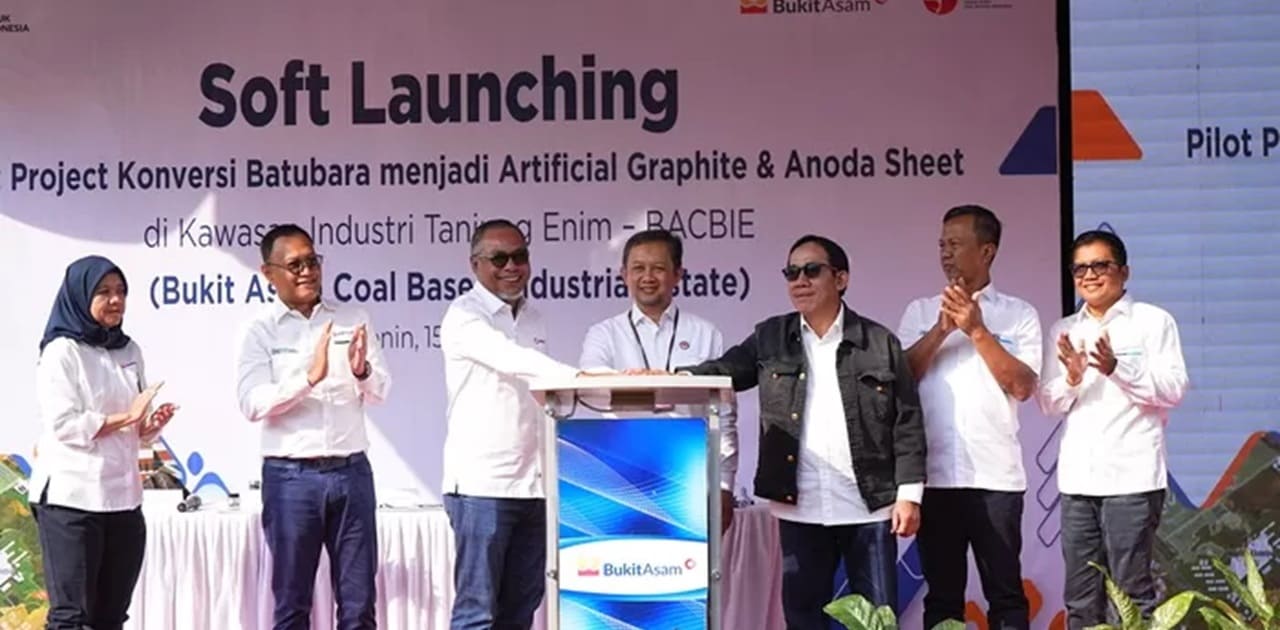Heaptalk, Jakarta — PT Bukit Asam (PTBA), a member of Mining Industry Indonesia (MIND ID), has partnered with the National Research and Innovation Agency (BRIN) to develop coal into raw materials for Lithium-ion (Li-ion) batteries.
This collaboration begins a pilot project to convert coal into artificial graphite and anode sheets for Li-ion battery raw materials. The pilot project is expected to progress towards commercial stages. Dilo Seni Widagdo, Director of Portfolio & Business Development at MIND ID, emphasized that the sustainability of this project requires comprehensive economic considerations and support.
“MIND ID focuses on supporting the electric vehicle battery ecosystem. Therefore, this potential must be fully supported by all MIND ID groups. This project is a strategic step that will support PTBA’s business diversification and strengthen our position in the electric vehicle battery supply chain in the future,” explained Dilo.
Advancing the domestic EV industry

Meanwhile, Arsal Ismail, President Director of PT Bukit Asam, stated, “Bukit Asam aims to provide endless energy for the country. One of our efforts is establishing a coal industry with clean technology in Indonesia.” According to Arsal, implementing anode sheets made from coal is the world’s first step, showcasing a significant breakthrough in coal downstream. He expressed optimism that developing coal into artificial graphite and anode sheets will support the advancement of the domestic electric vehicle industry.
Artificial graphite is a key material for anodes, which are electrodes where oxidation reactions (positive pole) occur—a crucial component for Li-ion batteries. The demand for artificial graphite and anode sheets is expected to increase alongside the growth of the electric vehicle industry. These components are also needed in other industries, such as energy storage, electronics, and medical equipment.
Furthermore, these downstream efforts align with PTBA’s vision to become an environmentally conscious world-class energy company, supporting the achievement of Net Zero Emission targets by 2060 or earlier.











